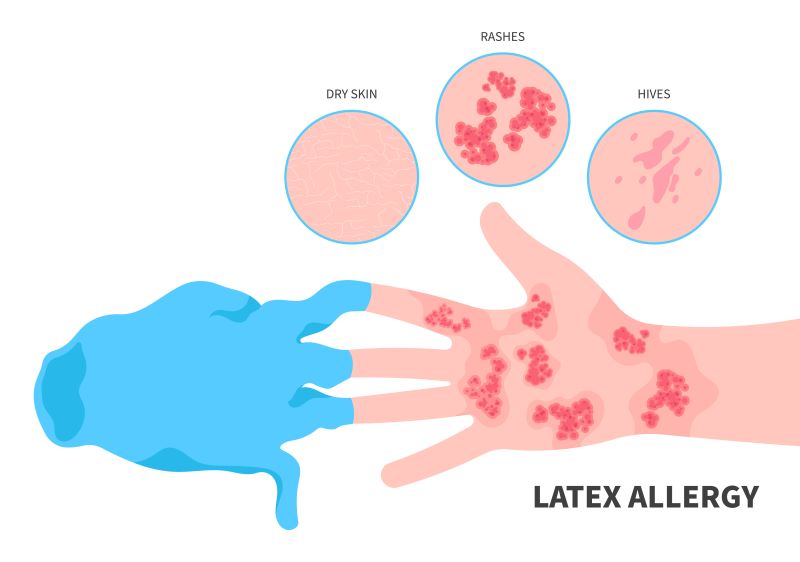Understanding Latex Allergies and Telehealth Consultations with Umedoc

If I am allergic to bananas am I allergic to Latex?
A latex allergy means that you are allergic to natural rubber latex, which is made up of the sap from rubber trees. You typically will not have a reaction until you have had repeated contact with items that contain latex, which is most commonly found in medical and other consumer products. This allergy is relatively rare but often more commonly seen in healthcare workers. You also may be at an increased risk of latex allergy from having multiple surgical procedures, like people with spina bifida. Interestingly, synthetic rubber does not contain natural rubber latex so people with a latex allergy will not usually have a reaction.
What reaction will I have?
There are different types of latex allergies mediated by different areas of your immune system. Depending on which type of allergy you have, you may experience 1 of the 3 reactions:
- IgE-mediated reaction: hives, vomiting, anaphylaxis (the most severe)
- This is typically an immediate reaction
- Contact dermatitis: red rash, papules, vesicles, oozing rash
- This is typically a delayed reaction (can take 24-48 hours to appear)
- Irritant reaction: dry, red, cracking skin
- This is from repeated exposure over time
What else could I be allergic to?
30-35% of people with latex allergy also have an allergic reaction to certain fruits and veggies. This is because these foods have such similar protein structure to latex, and it confuses the body into thinking the food items are actually latex. You could have a reaction from touching, smelling, or eating certain fruits and veggies.
If you have a known latex allergy, the following foods have the highest chance of cross reactivity with latex allergies:
- Bananas
- Avocados
- Kiwis
- Chestnuts
The following may also have a cross reactivity, but are seen less commonly than the previously mentioned:
- Apples
- Carrots
- Celery
- Melons
- Papayas
- Potatoes
- Tomatoes
Be cautious when coming into contact with any of the fruits or veggies mentioned if you have a known latex allergy.
Read more about this article here!
Summary:
- Latex allergy is a reaction to natural rubber latex commonly found in medical and consumer products.
- It typically requires repeated contact with latex-containing items to trigger a reaction and is more common among healthcare workers.
- There are three types of reactions, including immediate IgE-mediated reactions (hives, vomiting, anaphylaxis), delayed contact dermatitis (red rash, papules, vesicles), and irritant reactions (dry, red, cracking skin).
- About 30-35% of latex allergy sufferers may also experience allergic reactions to certain fruits and vegetables due to similar protein structures.
- High-risk foods for cross-reactivity with latex allergies include bananas, avocados, kiwis, and chestnuts.
- Other foods like apples, carrots, celery, melons, papayas, potatoes, and tomatoes may also cause cross-reactivity but are less common.

This article reviewed by Dr. Jim Liu, MD and Ms. Deb Dooley, APRN.
There’s nothing more important than our good health – that’s our principal capital asset.
#medical #telehealth #umedoc






